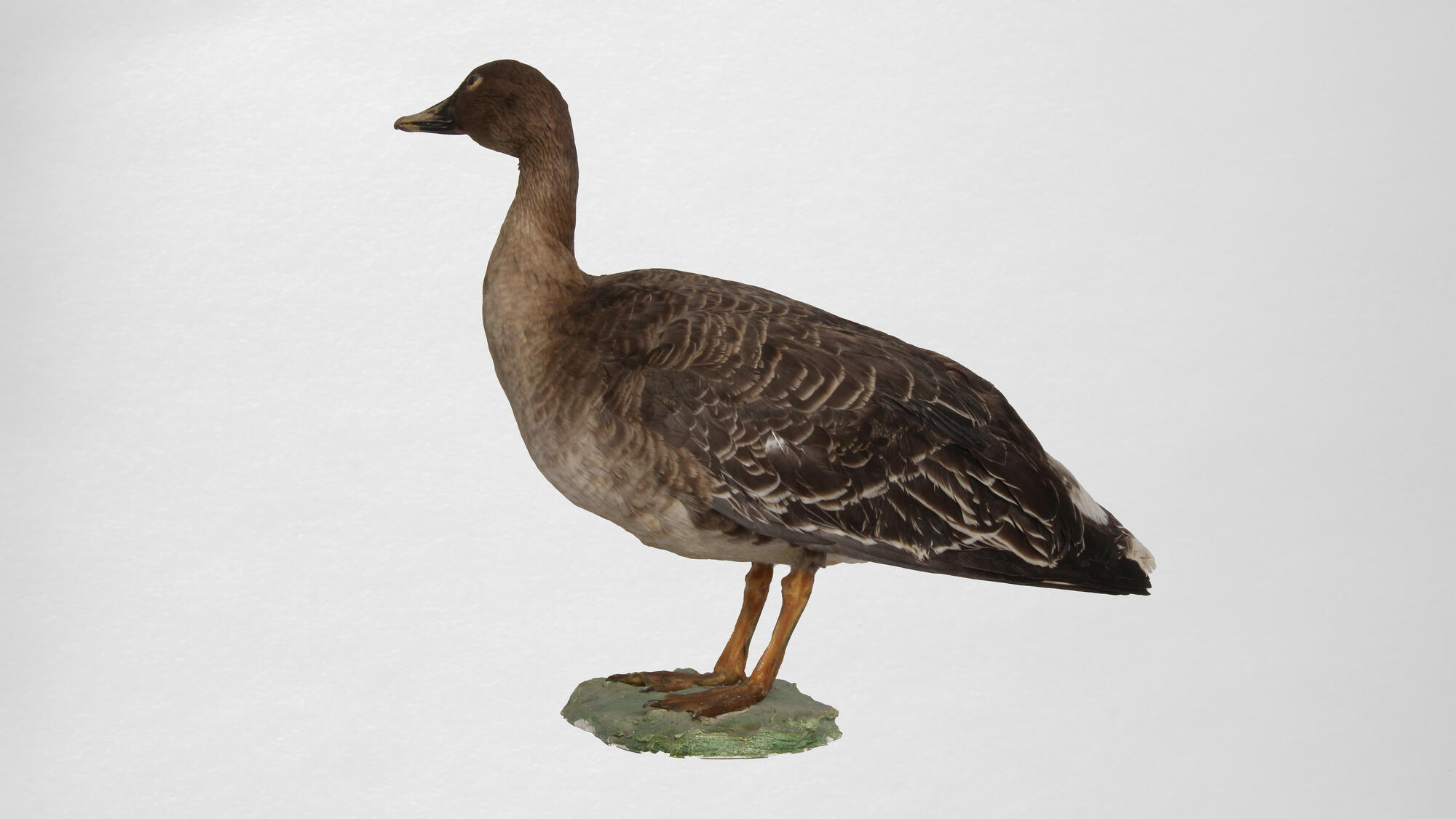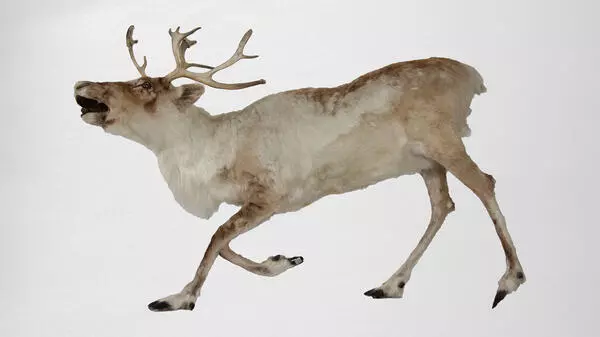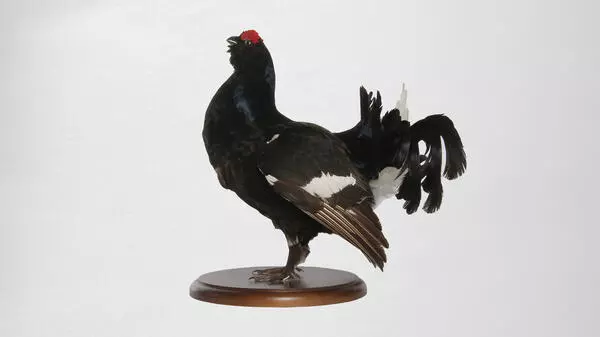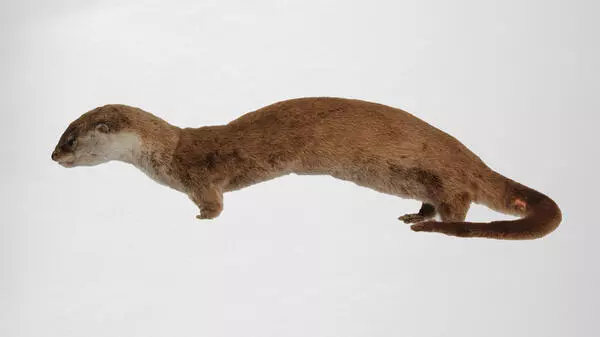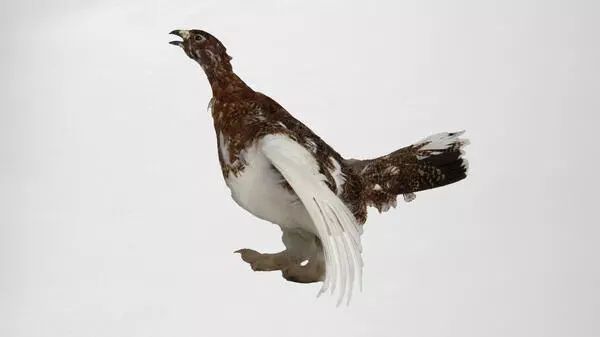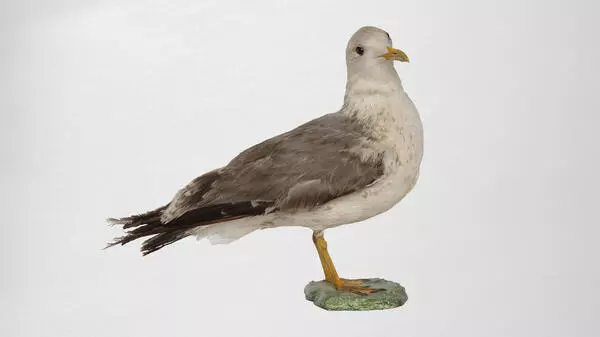The bean goose is also called the taiga bean goose. It lives in the Eurasian tundra and taiga — from Greenland to Yamal, Siberia and the Far East.
Bean goose weight ranges from 2.5 to 5 kilograms. The wingspan in the flight reaches 1.5–1.7 meters. Its bright paws and a strip on a black beak stand out against the background of the bird’s inconspicuous gray-brown plumage. The color of the paws depends on the habitat, but most often it is yellow or orange. The top of the bean goose’s neck is darker than the chest, the belly is white, and there are light cross lines on the sides. The plumage color of males and females is the same, but the birds differ in size: females are slightly smaller.
Bean geese live in family groups or couples, they do not create colonies. Although this waterfowl settles near the swampy floodplains of rivers, streams and lakes, the goose spends the day in the tundra or in flood-meadows searching for food. It descends to the water later in the evening, when it is time to rest.
The bean goose mainly feeds on plants. Adult birds prefer the roots, leaves and shoots of wild herbs, reed shoots, cranberries and blueberries, and cone seeds. During the flights, flocks of geese stop in agricultural fields, where they eat wheat, millet, corn, rice. Sometimes they rob private vegetable gardens — they eat vegetables and berries.
The bean goose not only dives and swims well, but also flies and walks well — on land, the goose behaves as confidently as on water. Unlike ducks, when walking and running, the bean goose holds steady, does not waddle. In moments of danger, especially during molting, if the bean goose cannot take off, it runs away.
The goose sheds feathers unevenly. In the first year of life, young geese completely change down feathers to ordinary feathers in summer. The adult sheds feathers in two stages. Plumage begins to change in summer, this process ends in autumn. The younger geese are the first to lose feathers, and the older geese lose feathers after 10 days.
During the molting period bean geese lose their feathers and cannot fly, so they become especially vulnerable. Birds begin to gather in larger groups to protect themselves from predatory animals and move to areas with low grass and better visibility. At the end of summer, these groups and couples flock together to prepare for overwintering.
Wedge-shaped or flying in one straight line, the groups are headed by experienced leaders, who periodically replace each other. In case of danger, the leader soars up sharply. The peculiarity of the bean goose is frequent roll calls during the flights. This subspecies stands out from the rest of the geese with a nasal trisyllabic honk. The bean goose’s voice is monotonous, harsh, and the flock flying by creates a low-frequency noise that can be heard even from several kilometers away.
Bean goose weight ranges from 2.5 to 5 kilograms. The wingspan in the flight reaches 1.5–1.7 meters. Its bright paws and a strip on a black beak stand out against the background of the bird’s inconspicuous gray-brown plumage. The color of the paws depends on the habitat, but most often it is yellow or orange. The top of the bean goose’s neck is darker than the chest, the belly is white, and there are light cross lines on the sides. The plumage color of males and females is the same, but the birds differ in size: females are slightly smaller.
Bean geese live in family groups or couples, they do not create colonies. Although this waterfowl settles near the swampy floodplains of rivers, streams and lakes, the goose spends the day in the tundra or in flood-meadows searching for food. It descends to the water later in the evening, when it is time to rest.
The bean goose mainly feeds on plants. Adult birds prefer the roots, leaves and shoots of wild herbs, reed shoots, cranberries and blueberries, and cone seeds. During the flights, flocks of geese stop in agricultural fields, where they eat wheat, millet, corn, rice. Sometimes they rob private vegetable gardens — they eat vegetables and berries.
The bean goose not only dives and swims well, but also flies and walks well — on land, the goose behaves as confidently as on water. Unlike ducks, when walking and running, the bean goose holds steady, does not waddle. In moments of danger, especially during molting, if the bean goose cannot take off, it runs away.
The goose sheds feathers unevenly. In the first year of life, young geese completely change down feathers to ordinary feathers in summer. The adult sheds feathers in two stages. Plumage begins to change in summer, this process ends in autumn. The younger geese are the first to lose feathers, and the older geese lose feathers after 10 days.
During the molting period bean geese lose their feathers and cannot fly, so they become especially vulnerable. Birds begin to gather in larger groups to protect themselves from predatory animals and move to areas with low grass and better visibility. At the end of summer, these groups and couples flock together to prepare for overwintering.
Wedge-shaped or flying in one straight line, the groups are headed by experienced leaders, who periodically replace each other. In case of danger, the leader soars up sharply. The peculiarity of the bean goose is frequent roll calls during the flights. This subspecies stands out from the rest of the geese with a nasal trisyllabic honk. The bean goose’s voice is monotonous, harsh, and the flock flying by creates a low-frequency noise that can be heard even from several kilometers away.
